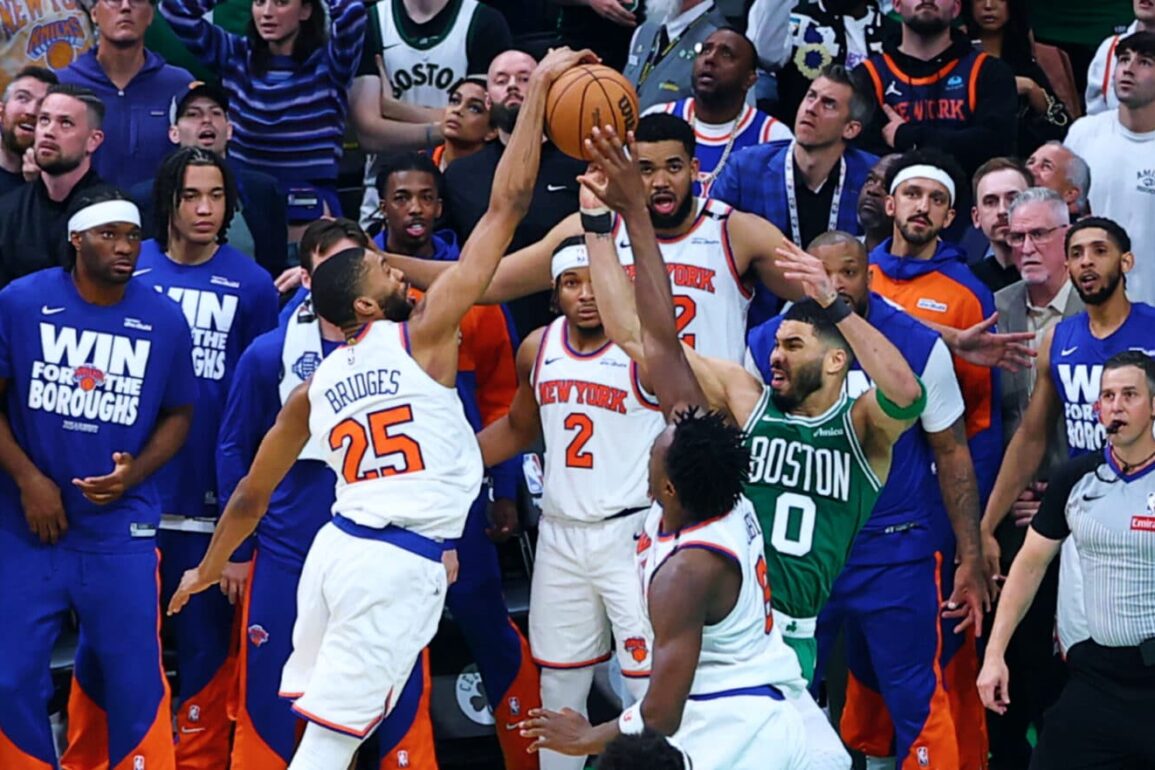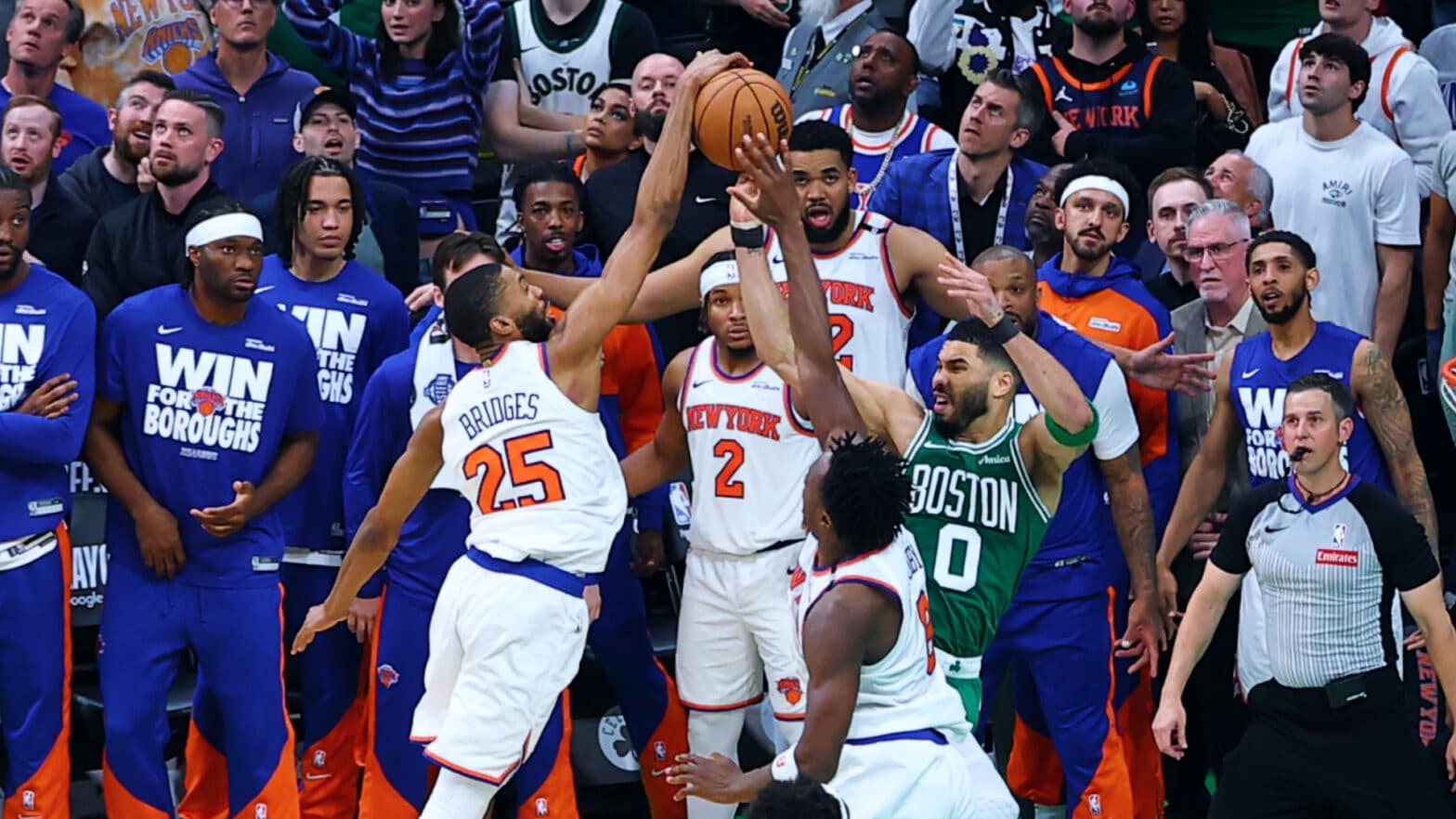
Jayson Tatum and the Celtics have struggled to find daylight in the critical moments through two games vs. New York.
Nobody could have predicted what would happen in the first two games of the Eastern Conference semifinals series between the Boston Celtics and New York Knicks.
The Knicks came in after struggling to beat the sixth-seeded Detroit Pistons in the first round and having gone 0-10 in the regular season against the three best teams in the league. Going back another year, they had lost eight of their last nine games against Boston.
The Celtics are the defending champs and one of two teams that ranked in the top five on both ends of the floor. They led both games by 20 points … and are somehow trailing 2-0, with three of the next four at Madison Square Garden (if they can extend the series that far).
It’s been an ugly series, with the two teams (both top-five offenses in the regular season) having combined to score exactly a point per possession (394 on 394). The Knicks have now played seven straight games that were within three points in the final minute, and need to just get two of the next five to advance to the conference finals for the first time in 25 years.
The Celtics are down 2-0, having suffered brutal collapses in both games at home. But it wouldn’t be a shock if they won the next four.
Here are some notes, numbers and film as the series moves to New York for Game 3 on Saturday (3:30 ET, ABC):
1. Boston is missing wide-open 3s
The Celtics take some of the toughest 3-pointers in the league. According to Second Spectrum tracking, they ranked 25th in the percentage of their 3-point attempts (46%) that were wide open and 28th in the percentage (65%) that came off the dribble in the regular season. The percentage that were wide open was just 34% in the first round, when they shot 38% from beyond the arc overall.
In the first two games of the conference semis, 48% of the Celtics’ 3-point attempts have been wide open. But they’ve shot just 12-for-48 (25%) on those wide-open 3s.
Celtics’ wide-open 3-point attempts
| Season/round | 3PM | 3PA | 3P% | %3PA |
|---|---|---|---|---|
| Reg. season | 737 | 1,811 | 40.7% | 46% |
| First round | 22 | 53 | 41.5% | 34% |
| Games 1 & 2 | 12 | 48 | 25.0% | 48% |
%3PA = Percentage of total 3PA
via Second Spectrum tracking
The Celtics forced some tough shots with time left on the shot clock down the stretch of Game 2. And they could certainly benefit from additional ball and player movement. But they also missed three 3-pointers where no defender was anywhere in the vicinity of the shooter in the final seven minutes:
- A wide-open pull-up 3 for Jaylen Brown, when the Celtics got Jalen Brunson and Karl-Anthony Towns involved in the same pick-and-roll.
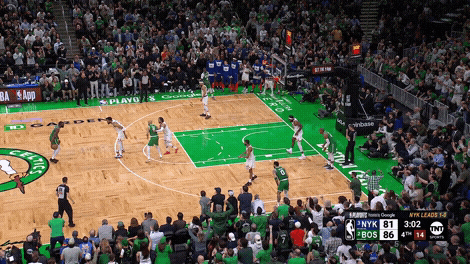
If any of those three shots go in, this series is likely tied 1-1. But the Celtics are now 1-for-11 on clutch 3-pointers in the playoffs.
2. Celtics winning the possession game
Boston was the more effective shooting team in the regular season and in the first round. According to Second Spectrum, the Celtics have had the higher shot quality in both games.
It seemed that, if the Knicks were to have a chance in this series, they would have to win the possession game, take care of the ball and beat the Celtics on the glass.
But the Celtics have totaled 18 more shooting opportunities than the Knicks over the two games. They’ve committed two fewer turnovers and won the rebounding battle. There are six Celtics with at least four offensive rebounds over the two games.
Midway through the second quarter on Wednesday, Brown stripped OG Anunoby after a rebound, beat Josh Hart to the ball after Jrue Holiday missed a 3-pointer, and got himself one of those wide-open 3s. This one went in:
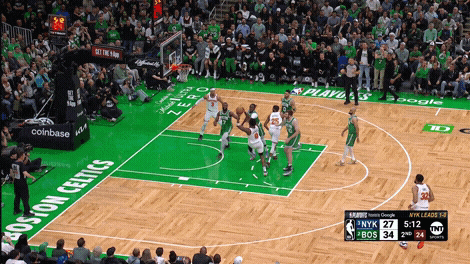
The Celtics should shoot better going forward, but they shouldn’t count on shooting better. And if they can continue to win the possession game, they’ll have to worry less about the makes and misses.
3. Robinson is making an impact
The Knicks have been able to mitigate the Celtics’ advantage on the glass when Mitchell Robinson has been on the floor. They’ve grabbed 51.5% of available rebounds with Robinson on the floor and just 42.3% with him on the bench.
Overall, the Knicks have outscored the Celtics by 32 points in Robinson’s 43 minutes over the first two games. No other player in the series is better than a plus-6, and the Celtics clearly don’t like it when Robinson’s on the floor, as they’ve taken multiple fouls to put the Knicks in the bonus and to get him off.
The difference between Robinson’s minutes in the game (plus-34.5 points per 100 possessions) and his minutes on the bench (minus-22.7 per 100) has been about even on both offense and defense.
On defense, he’s been more effective against the pick-and-roll than Towns. He got blown by on Tatum’s dunk for the lead late in Game 2, but stayed in front of the Celtics’ star on the next possession.
According to Second Spectrum, the Celtics have scored just 0.62 points per chance when Robinson has defended a ball-screen, including 0.69 points per chance (11 on 16) when he’s switched onto the ball-handler.
Before the stop at the end of Game 2, there was a similar one at the end of regulation in Game 1, when Robinson switched onto Tatum and forced a tough, step-back 3 that set the Knicks up with a chance to win the game:
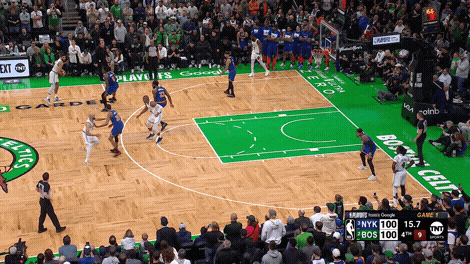
Robinson has replaced Towns for defense in the final seconds of both games, but the numbers have been even better with the two bigs on the floor together. The Knicks have outscored the Celtics by 21 points in 15 minutes with the double-big lineup, allowing just 11 points on 28 Boston possessions (39 per 100).
4. Stars make the best screeners
The focus of both offenses is who’s setting screens for the stars. The Celtics are trying to get Towns and Brunson in actions for Tatum and Brown; the Knicks are targeting the Boston bigs with their screens for Brunson.
But some of the most effective screens have been the ones set by the stars themselves.
Late in the first quarter of Game 2, Brunson set an ad-lib transition screen for OG Anunoby along the left sideline. Payton Pritchard didn’t want to leave Brunson, so Anunoby got a step on Derrick White. Luke Kornet had to help, and Anunoby dropped the ball off to Robinson for a dunk:
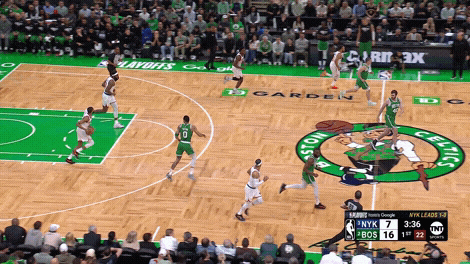
Midway through the second quarter, Tatum set a screen for White. Mikal Bridges didn’t want to leave Tatum, so while he hedged out quickly, he stayed attached to his man. That allowed White to beat Cameron Payne, draw help and drop the ball off to Luke Kornet for a layup:
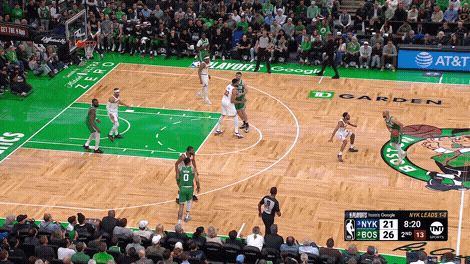
It’s obviously easier to keep the ball in the stars’ hands, but because they’re the focus of the opposing defense, they can also be effective when they don’t have it.
* * *
John Schuhmann is a senior stats analyst for NBA.com. You can e-mail him here, find his archive here and follow him on X.
The views on this page do not necessarily reflect the views of the NBA, its clubs or Warner Bros. Discovery.
This post was originally published on this site be sure to check out more of their content.



